History and background of theories
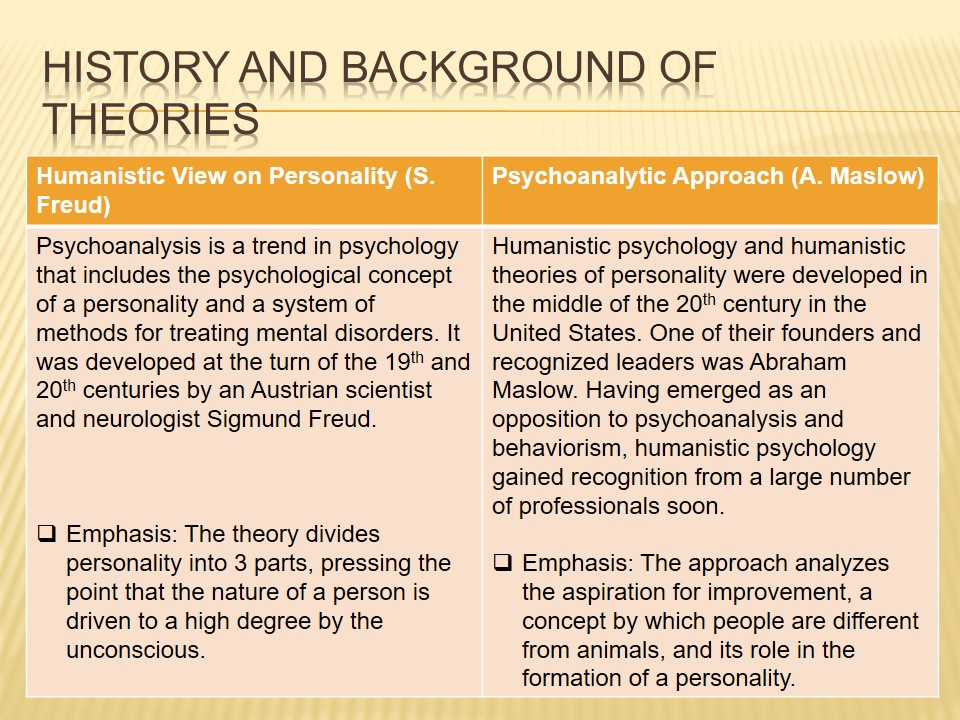
First Theory: Humanistic View on Personality
Abraham Maslow’s beliefs include the following ideas:
- A personality is a matter of personal choice, not nature or nurture;
- Reality is not objective, but subjective; it is the way one feels and perceives the environment and the society;
- All people are considered as naturally good and having innate potential spiritual needs and qualities;
- Self-development, understanding the world, the desire to acquire knowledge of good and evil and the sense of life belong to such desires of an individual;
- However, these aspirations can be temporarily blocked by adverse living conditions and not reflect in the actual behavior of a person.
Maslow created a hierarchy of a person’s needs that can be represented with a pyramid.
The system is composed of 5 tiers:
- Physiological needs. They are deficiency needs, controlled by the organs of the body and include breathing, sexual needs, the desire for self-defense and nutrition;
- Safety needs. To this group of one’s demands, belong the want of financial stability, being healthy and other security issues;
- Social needs. A personality’s desire for communication, love, intimacy and being understood by others are qualified as parts of this section of needs;
- The need for esteem. A person wants to be respected by others and to be successful in order to achieve self-esteem;
- The desire for self-actualization. One tries to become the best version of themselves and find their mission in the world.
The researcher has also investigated the principles concerning the pyramid and found out that:
- The motives have a strictly hierarchical structure which means that only after satisfying the needs of the lowest tier, a person can go further;
- With increased needs, one shows more readiness to be active.
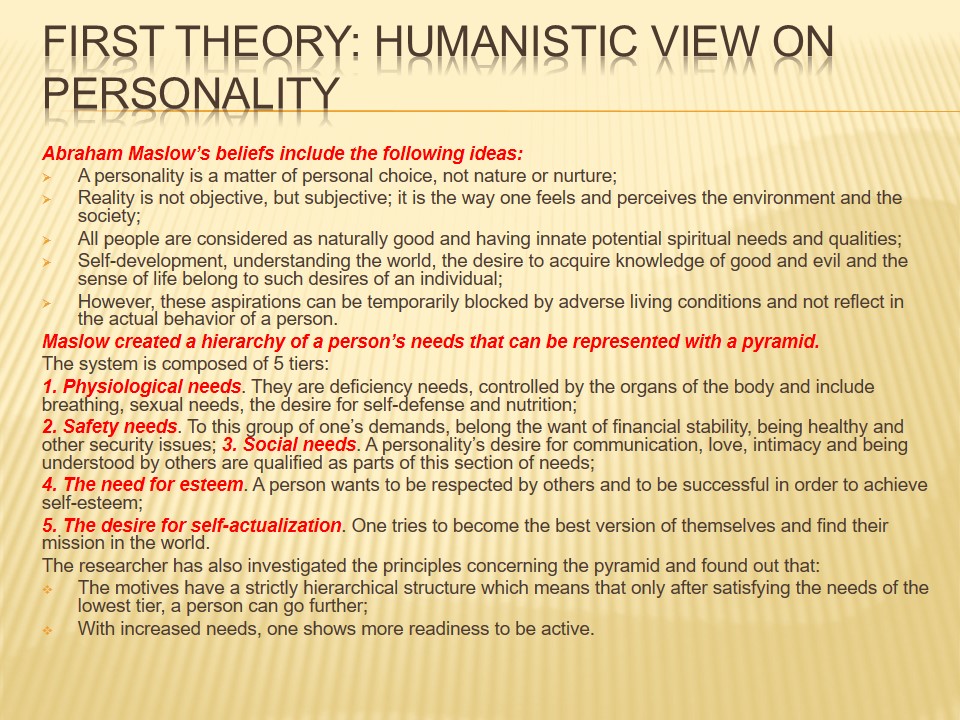
Second Theory: Psychoanalytic Approach
The main concepts of Freud’s psychoanalytical theory are:
- The unconscious is the deepest and the most significant part of one’s mind;
- It has a great impact on a person’s actions, behavior and determines the nature of personality;
- The unconscious might be a repository of primitive instinctual impulses, emotions, and memories that threaten the consciousness so much that they have been suppressed or forced out into the realm of the unconscious;
- Forgotten childhood psychodramas, hostile feelings towards a parent, and repressed sexual desires serve as examples of what the unconscious is composed of;
- Hence, the experience that one has had in early childhood possesses of great influence on the personality;
According to Sigmund Freud, the personality consists of 3 components:
The Id
- This part is the initial essence for the other manifestations of personality and its innate, component;
- The id is unconscious and natural; it contains a source of energy and wants satisfaction immediately;
- Despite the fact that other areas of consciousness developed on the basis of the id, the component itself is primitive and disorganized;
The Ego
- Is a structural component of the psyche that is in contact with the external world;
- It develops from the id as the child begins to become aware of their own individuality and satisfy the repeated demands of the id;
- In order to accomplish this task, the ego, like the bark of a tree, protects the id, but also feeds on its energy; The task of the ego is to ensure the vital capacity, safety, and mental health of an individual;
- The ego relates to both the surroundings and the internal world, the motives of which it seeks to satisfy.
The Superego
- Is the last component of the personality structure that develops from the ego, not from the id;
- The superego serves as a judge or censor of the actions and thoughts of an individual;
- This is also a repository of moral norms, standards of behavior, and the ideas from that prohibitions result;
- The superego defines the perfect image of ourselves and is responsible for self-observation.
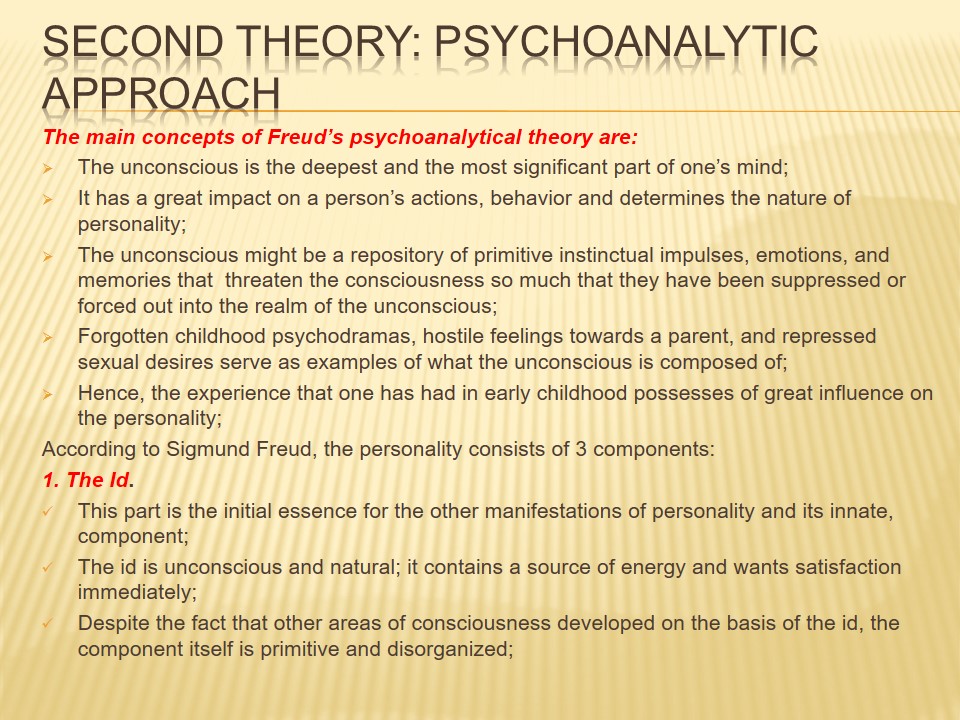
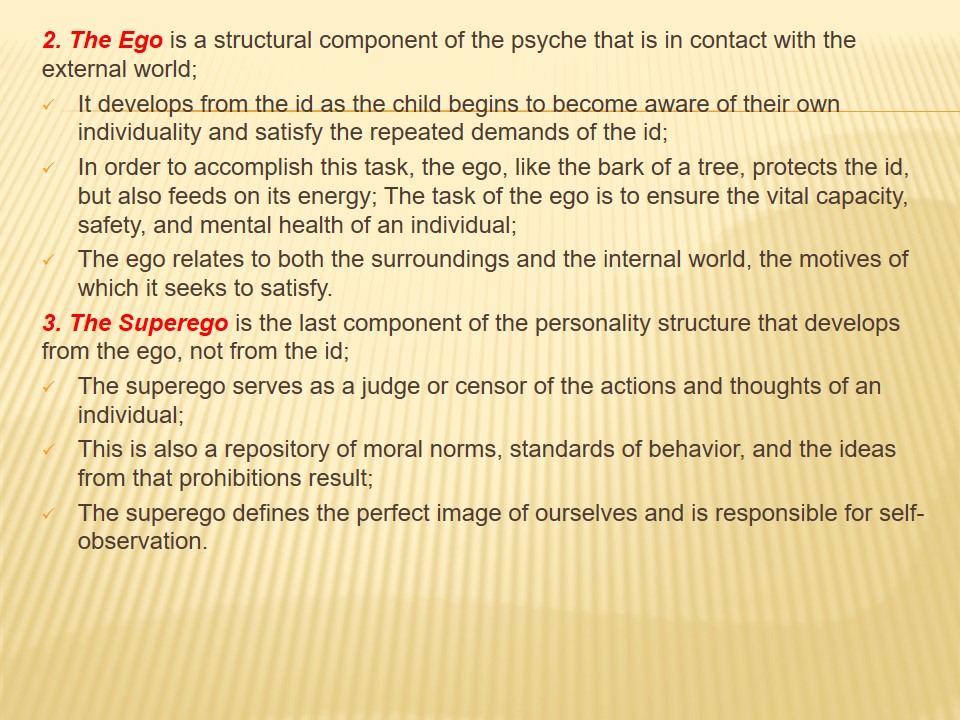
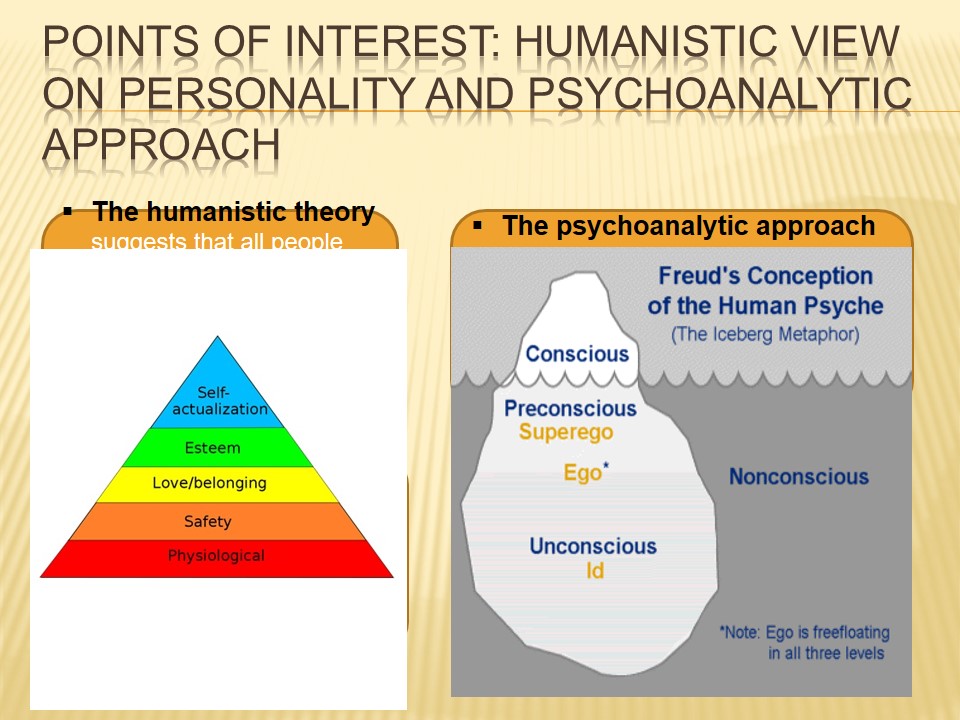
Combining the ideas gives a new personality theory
A person naturally tends to make choices that contribute to the development of his or her personality; one has control over what is his personality like + The nature of the personality is determined by the unconscious and early experiences that can not be supervised = One’s personality is both shaped on the basis of the unconscious, thus, his or her childhood experiences, and formed by personal choices.
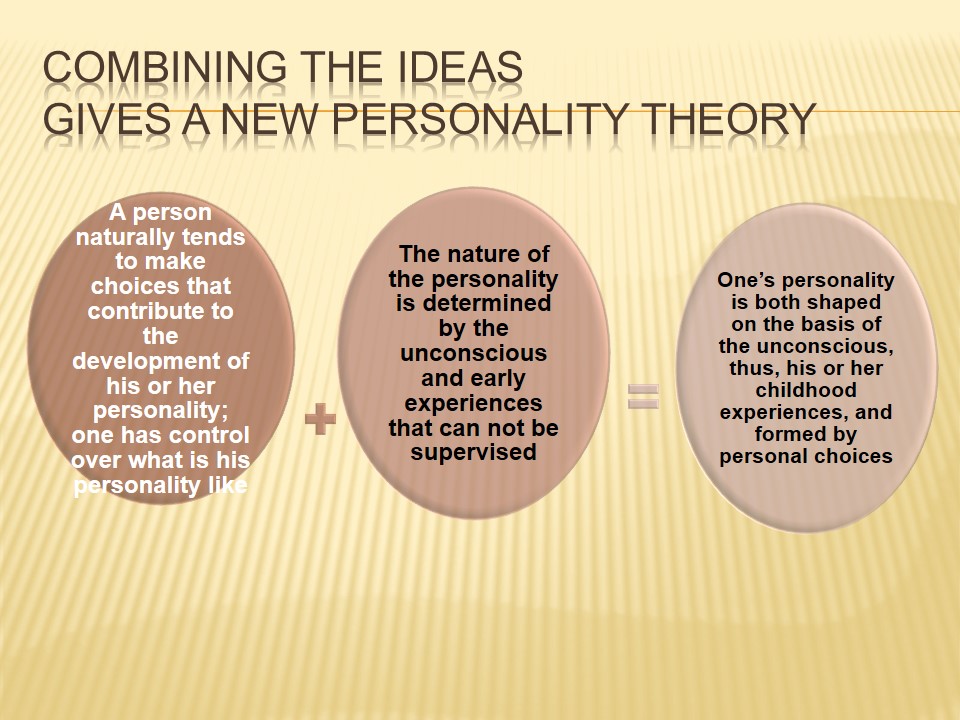
References
Freud, S. (2019). The ego and the id. New York, NY: Skyhorse Publishing.
Hopper, E. (2019). Maslow’s Hierarchy of Needs Explained. Web.